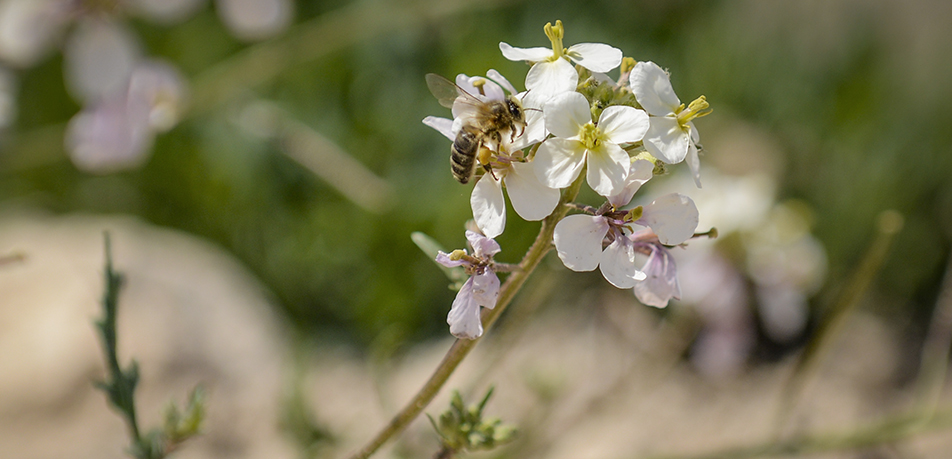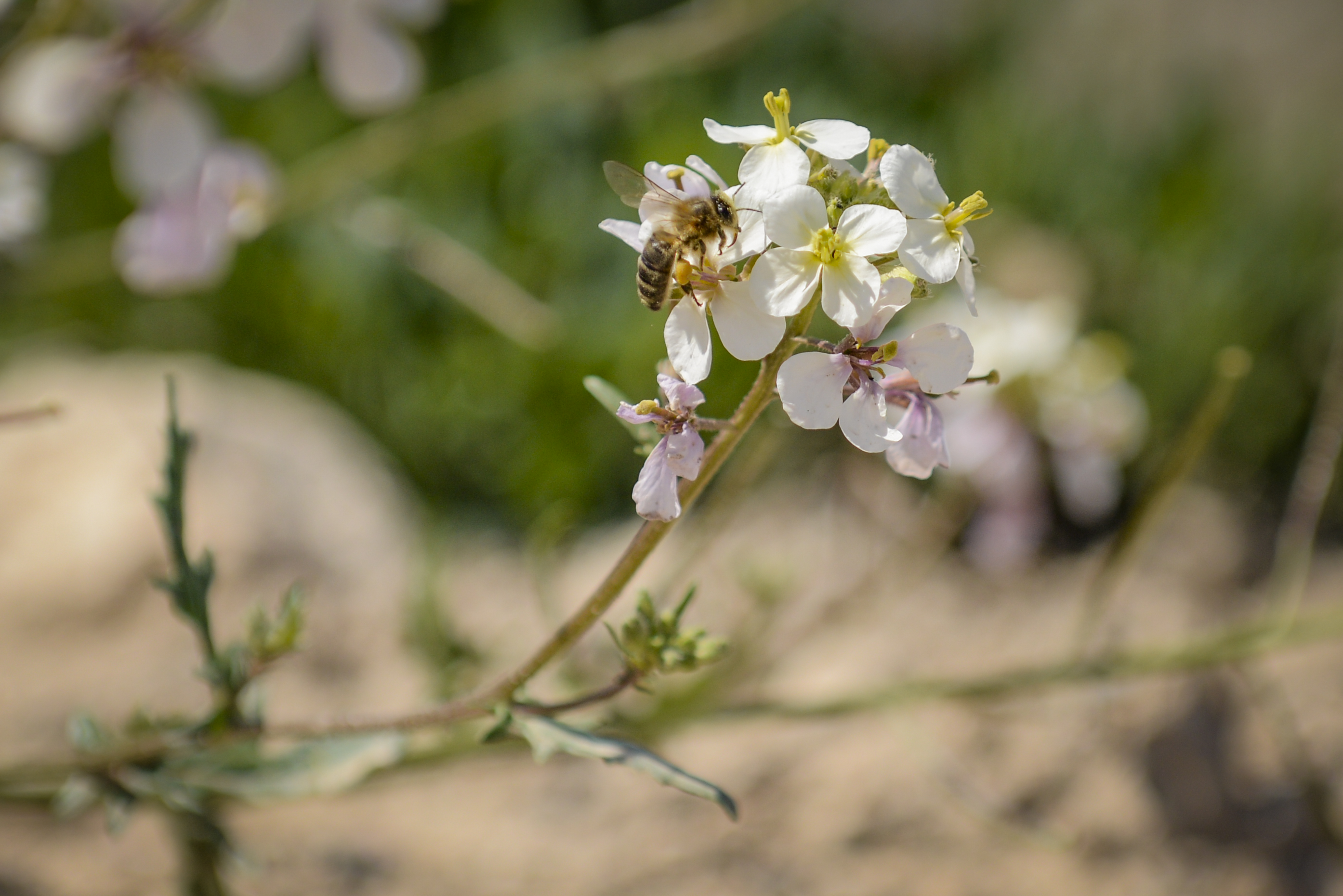The Fascinating (and Endangered) World of Bees

Few insects are as closely associated with the wine world as the bee, a common vineyard dweller whom winegrowers regard with great appreciation. So much so that many winemakers are also beekeepers, recognizing the essential role which bees play in their work.
The honeybee (Apis mellifera) displays some of the most advanced individual and social behaviour in the natural world.They are famous for their communication system (known as the “waggle run” or “bee dance”) with which they indicate the direction of a flower patch to the rest of the swarm and the distance they will have to travel. The most notable aspect of their behaviour, however, pertains to the complex network of relations that govern the hive.
From birth, bees are destined to carry out a role which they will never abandon. This means female bees will either be queens or workers while males will only ever be drones.
Throughout their lives, they live on pollen and nectar and raise their young on the same diet, except for the queens, whom the workers feed royal jelly, a protein-rich salivary secretion.

Bee on a white flower at a Familia Torres vineyard
This substance, which is fed to all larvae during their first few days of life, represents one of the richest protein, vitamin, mineral, and amino acid cocktails that nature has to offer. It has health benefits for humans as well.
When the queen dies, the hive is plunged into a deep crisis, which the workers can only overcome by preparing more eggs in the hope of finding an “emergency queen”. The first to hatch will use her stinger to attack the cells of her rivals, thus securing her position as queen, after which she will reign for several years. By contrast, the worker bees only live a summer whereas the drones – which only fulfil a reproductive function – are expelled from the hive in autumn.
Uncertain times
Despite their sophisticated evolution and notable environmental adaptability, these beneficial insects, which are essential for the pollination of wild flowers and our crops, are immersed in an unprecedented crisis. Their populations are in steep decline, especially on the European continent.
According to the most recent calculations, the European bee population has dropped between 20% and 40% in the past two decades. In England, the production of bee colonies has dropped by half over the past five years; in France the decline already exceeds 40%, whereas in Spain it is around 30%.
Among the causes of this decline are the proliferation of certain mites like Varroa, the mechanization of farming, the excessive use of agrochemicals, the climate emergency, and most importantly the rise in invasive species like the yellow-legged or Asian hornet (Vespa velutina), a formidable enemy that can catch up to fifty bees a day.
But as the environmental organization Greenpeace explains in its report Bees in Decline, the main factor driving the disappearance of bees is the use of insecticides that adversely affect the colonies.
Aware of this fact, the European Union introduced a ban three years ago on some of the insecticides that are most harmful to bees. All of these belong to the family of neonicotinoids. This decision was recently upheld by the European Union Court of Justice. Even so, these insecticides are still in use due to exemptions granted by some member states.
What would happen if bees went extinct?
The United Nations Food and Agriculture Organization (FAO) issued a recent alert that more than 70% of all crops, representing 90% of global food production, depend on bees for pollination. According to the Greenpeace study, which uses the same standards as the FAO for its calculations, the production of kiwis, pumpkins, courgettes, melons, and watermelons – to name a few – would decrease by up to 90% if bee populations continue to decline.
Bee pollination is also responsible for 40% to 90% of the global harvests of loquats, quinces, apples, peaches, almonds, and nectarines. As a result, the critical decline of bee populations would also have a catastrophic effect on agriculture and the global economy.
Averting these disastrous consequences not only means eliminating the use of insecticides, but also restoring and protecting natural habitats. It means encouraging biodiversity in croplands by implementing good agricultural practices in harmony with nature, such as those put forth by the regenerative agricultural model. And it goes without saying that we must listen to what the beekeepers are telling us – a profession that spans millennia but is at greater risk now than ever before.
